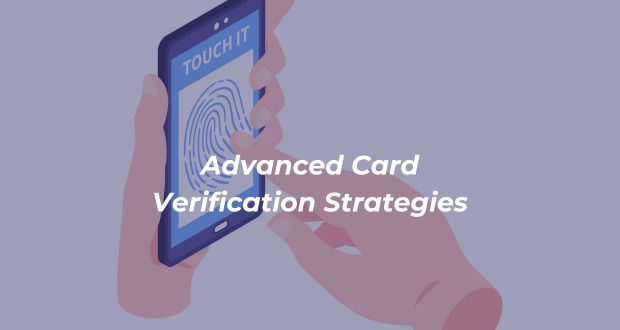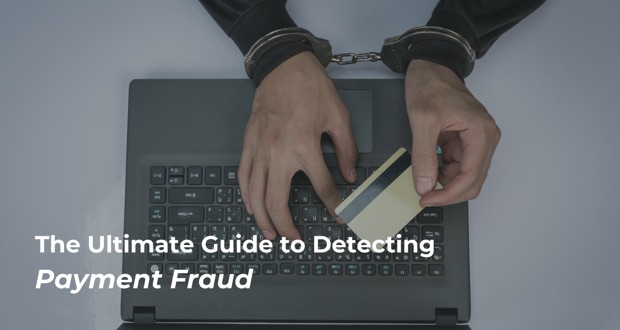The Importance of Payment Monitoring
Payment monitoring is the process of continuously tracking and analyzing financial transactions to identify suspicious activities, prevent fraud, and ensure compliance with regulatory requirements. A robust payment monitoring system is essential for several reasons:
- Payment Security: Protecting sensitive financial information from unauthorized access and fraudulent activities is paramount. A well-implemented payment monitoring system can detect anomalies in real-time, enabling businesses to take immediate action and prevent potential breaches.
- Regulatory Compliance: Businesses must comply with various regulatory requirements, such as Anti-Money Laundering (AML) regulations and the Payment Card Industry Data Security Standard (PCI DSS). Failure to comply can result in hefty fines, legal consequences, and reputational damage. Effective payment monitoring ensures that businesses adhere to these regulations and avoid penalties.
- Real-Time Monitoring: The ability to monitor transactions in real-time is crucial for detecting and preventing fraudulent activities. Real-time monitoring allows businesses to identify suspicious patterns and take swift action to mitigate risks.
- Anti-Money Laundering (AML): AML regulations require businesses to monitor transactions for signs of money laundering and report suspicious activities to regulatory authorities. A robust payment monitoring system can help businesses comply with AML requirements and prevent financial crimes.
Payment monitoring is a critical component of financial security and regulatory compliance. By implementing a robust payment monitoring system, businesses can protect themselves from payment security breaches, ensure compliance with regulatory requirements, and maintain the trust of their customers. In the next sections of this article, we will delve deeper into specific tips and strategies for successful payment monitoring, helping businesses navigate the complexities of the digital payment landscape.
Components of an Effective Payment Monitoring System
Payment Monitoring System Essentials
A payment monitoring system is a sophisticated framework designed to oversee and analyze financial transactions to detect and prevent fraudulent activities, ensure regulatory compliance, and safeguard sensitive financial data. To achieve these objectives, an effective payment monitoring system comprises several core components:
- Real-Time Monitoring: One of the most critical features of a payment monitoring system is its ability to monitor transactions in real time. Real-time monitoring enables businesses to detect suspicious activities as they occur, allowing for immediate intervention. For example, if a transaction deviates from established patterns, the system can flag it for further investigation, thereby preventing potential fraud.
- Data Analytics: Advanced data analytics is another essential component of a robust payment monitoring system. By leveraging big data and machine learning algorithms, the system can analyze vast amounts of transaction data to identify trends, anomalies, and potential risks. This analytical capability is crucial for detecting complex fraud schemes and ensuring comprehensive payment security.
- Rule-Based Alerts: Rule-based alerts are predefined criteria set within the payment monitoring system to trigger notifications when specific conditions are met. These rules can be customized based on the business's unique risk profile and regulatory requirements. For instance, a rule might be set to alert the compliance team if a transaction exceeds a certain amount or if multiple transactions are made from the same account within a short period. This proactive approach helps businesses avoid potential threats and maintain regulatory compliance.
Choosing the Right System
When selecting a payment monitoring solution, it is crucial to consider several key factors to ensure that the system meets your business's current and future needs. Scalability is a primary consideration, as the chosen solution must be capable of handling increasing transaction volumes as your business grows. A scalable system ensures you can continue monitoring payments effectively without experiencing performance issues or bottlenecks, even as your transaction volume expands.
Integration capabilities are another essential factor. The payment monitoring solution should seamlessly integrate with your existing infrastructure, including payment gateways, databases, and other systems. This seamless integration is vital for maintaining efficient workflows and ensuring that all components of your payment processing ecosystem work harmoniously together. A solution with robust integration capabilities can streamline operations and reduce the complexity of managing multiple systems.
Customization options are also important when selecting a payment monitoring solution. Every business has unique requirements, and a one-size-fits-all approach may not be sufficient. Therefore, it is beneficial to choose a system that allows you to tailor rules, alerts, and reporting to your specific needs. Customization ensures that the solution can adapt to your business processes and provide the insights and alerts that are most relevant to your operations. By considering scalability, integration capabilities, and customization options, you can select a payment monitoring solution that effectively supports your business's growth and unique requirements.
Strategies for Enhanced Payment Security
Implementing Robust Authentication Mechanisms
Multi-Factor Authentication (MFA) adds an extra layer of security by requiring users to provide multiple forms of identification before accessing payment systems. Common factors include something the user knows, such as a password; something the user has, like a mobile device or security token; and something the user is, such as biometric data like fingerprints or facial recognition. By implementing MFA, businesses significantly reduce the risk of unauthorized access. This layered approach ensures that even if one authentication factor is compromised, additional barriers prevent unauthorized entry, enhancing overall security.
Tokenization and encryption are critical techniques for protecting sensitive payment data. Tokenization involves replacing sensitive payment information, such as credit card numbers, with unique tokens. These tokens are meaningless to attackers and can be safely transmitted and stored. Even if a token is intercepted, it cannot be reversed to reveal the original data, thus safeguarding the actual payment information. On the other hand, encryption involves encoding payment data during transmission and storage using strong encryption algorithms. This ensures that the data remains inaccessible to unauthorized parties. Proper key management ensures that only authorized individuals can decrypt the data, maintaining its confidentiality and integrity.
Monitoring Suspicious Activities
Configuring real-time alerts for unusual payment patterns is a proactive approach to detecting and preventing fraud. For instance, businesses can set thresholds for transaction amounts, triggering an alert if a payment exceeds the predefined limit. Monitoring IP addresses and geolocation data can help identify payments originating from unexpected locations, warranting further investigation. Additionally, detecting sudden spikes in transaction frequency can indicate potential fraudulent activity. By setting up these real-time alerts, businesses can quickly respond to suspicious activities, minimizing the risk of financial loss.
Leveraging data analytics to identify anomalies is another effective strategy for enhancing payment security. Behavioral analysis involves comparing current user behavior to historical patterns, with any deviations potentially signaling fraud. Peer group analysis compares users' behavior to similar ones, flagging any outliers for further investigation. Machine learning models can be trained to recognize fraudulent patterns based on historical data, continuously improving their accuracy over time. By employing these advanced analytics techniques, businesses can proactively identify and mitigate potential fraud, ensuring the security of their payment systems.
Anti-Money Laundering (AML) Compliance
Compliance with Anti-Money Laundering (AML) regulations is critical to payment security. Integrating AML checks into payment monitoring processes helps businesses detect and prevent money laundering activities. Here are two key strategies:
- Integrating AML Checks into Payment Monitoring Processes: AML checks should be integral to the payment monitoring system. This includes screening transactions against watchlists, monitoring suspicious patterns, and conducting due diligence on high-risk customers.
- Reporting Suspicious Transactions to Regulatory Authorities: Businesses are required to report suspicious transactions to regulatory authorities as part of their AML compliance obligations. A robust payment monitoring system should facilitate this process by generating detailed reports and maintaining records of suspicious activities.
Regulatory Compliance and Reporting
Navigating Regulatory Frameworks
a. General Data Protection Regulation (GDPR)
The GDPR, applicable within the European Union (EU) and the European Economic Area (EEA), focuses on data protection and privacy. It impacts any organization handling the personal data of EU/EEA residents. Key principles of the GDPR include transparency, consent, data minimization, and the right to erasure. Organizations must be transparent about how they collect, use, and store personal data. They must also obtain explicit consent from individuals before processing their data, collect only the data necessary for specific purposes, and provide individuals with the right to request the deletion of their data.
b. Payment Card Industry Data Security Standard (PCI DSS)
PCI DSS applies to businesses that process credit card payments. Compliance with PCI DSS ensures the secure handling of cardholder data, which includes implementing encryption, access controls, and regular security assessments. Businesses must adhere to security standards designed to protect card information during and after a financial transaction. This includes maintaining a secure network, protecting cardholder data, managing vulnerabilities, implementing strong access control measures, and regularly monitoring and testing networks.
c. Other Industry-Specific Regulations
Additional regulations may apply depending on your industry. For instance, in the healthcare sector, the Health Insurance Portability and Accountability Act (HIPAA) sets standards for protecting sensitive patient information. The Sarbanes-Oxley Act (SOX) mandates strict reforms to improve financial disclosures and prevent accounting fraud in the financial services industry. Compliance with these regulations is crucial for maintaining the integrity and security of sensitive data and avoiding legal penalties.
Ensuring Compliance with Data Protection Laws
Businesses should adopt several best practices to ensure compliance with data protection laws. Data minimization involves collecting only the necessary data for payment processing and avoiding retaining excessive information. Consent management requires businesses to obtain clear and informed consent from users before processing their data. Additionally, businesses must understand and respect data subject rights, such as the rights to access, rectification, and erasure of personal data. Implementing robust security measures is critical to protect sensitive data from unauthorized access and breaches. This includes using encryption, access controls, and regular security assessments to safeguard data.
TrustDecision’s Fraud Management Strategy
TrustDecision's Fraud Management Strategy takes a multi-pronged approach to tackling payment challenges, using cutting-edge technology to secure your transactions. Let's delve into their specific payment solutions:
Real-Time Threat Detection with AI
- Data Powerhouse: TrustDecision gathers data from various sources to build a comprehensive picture of each transaction. This allows them to identify unusual patterns in real-time, with analysis completed in under 400 milliseconds.
- Smart Automation: Based on the calculated risk score, actions can be automated. This means legitimate transactions can be approved swiftly, while suspicious ones are flagged for further review.
- Actionable Insights: Detailed information on why a transaction is flagged is provided, allowing for informed decisions. This transparency empowers analysts to deep-dive when necessary.
Staying Ahead of the Curve with Machine Learning
- Adaptive Algorithms: TrustDecision's system continuously learns from historical data and adapts in real-time. This allows it to recognize new and evolving fraud tactics, ensuring your defenses stay up-to-date against emerging threats.
- Global Network Advantage: By leveraging a vast network of historical data, TrustDecision gains valuable insights into global fraud patterns. This global perspective strengthens their ability to identify and mitigate threats specific to your region.
Tailored Protection for Every Business
- Industry Expertise: TrustDecision understands that different industries face unique fraud challenges. Their team of specialists analyzes the specific threats and operational nuances of your industry.
- Customized Defense Strategy: Based on this analysis, they create a tailored defense strategy that aligns with your specific business needs. This ensures your resources are focused on the most relevant threats.
- Reduced False Positives: Fine-tuned rules minimize the number of legitimate transactions flagged as suspicious, ensuring a smooth customer experience without compromising security.
By combining real-time AI analysis, adaptive machine learning, and industry-specific customization, TrustDecision's Fraud Management Strategy provides a comprehensive shield against payment challenges. This empowers businesses to accept transactions with confidence, minimizing fraud losses while ensuring a seamless experience for legitimate customers.
Conclusion
Effective payment monitoring is a critical aspect of financial operations for businesses. Let’s recap the best practices discussed in this article:
- Understanding Payment Monitoring:some text
- Payment monitoring involves continuous surveillance and analysis of financial transactions.
- Real-time monitoring, data analytics, and rule-based alerts are essential components.
- Payment Security and Compliance:some text
- Payment security breaches can have severe consequences for businesses.
- Compliance with regulations (such as GDPR, PCI DSS, etc.) is non-negotiable.
- Strategies for Enhanced Payment Security:some text
- Implement robust authentication mechanisms (e.g., multi-factor authentication).
- Leverage real-time alerts and identify anomalies to prevent fraud.
- Integrate Anti-Money Laundering (AML) checks into payment monitoring processes.
- TrustDecision’s Fraud Management Strategy:some text
- Utilize AI-based fraud management to approve genuine orders and prevent fraud.
- Smart adaptive machine learning enhances security.
- Customize monitoring rules to reduce false positives.

.jpeg)



.jpeg)







